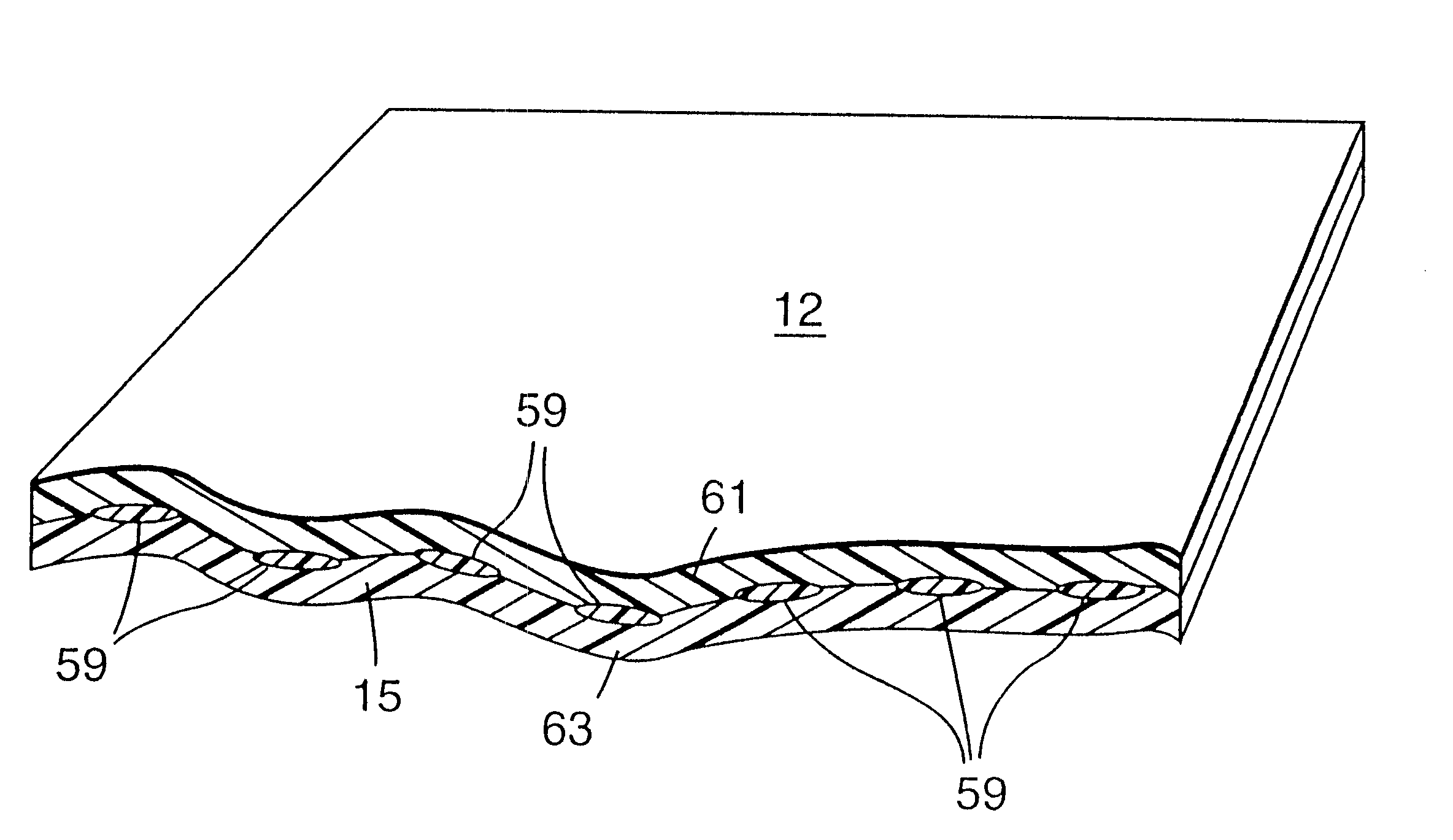Polymeric articles having embedded phases
a technology of polymer articles and phases, applied in the field of polymer articles having embedded phases, can solve the problems of narrowing the suitable use range, oriented polypropylene webs do not traditionally make satisfactory products requiring cross-web strength, and the cross-web tear strength is not desirable, so as to achieve the effect of reducing the contact time in the di
- Summary
- Abstract
- Description
- Claims
- Application Information
AI Technical Summary
Benefits of technology
Problems solved by technology
Method used
Image
Examples
example 2
xample 1 except the continuous matrix material extruder was run at 20 rpm with a head pressure of 12.4 MPa (1800 psi) to feed matrix material at a rate of about 11.8 kg / hr (26.0 lbs / hr).
examples 3-5
Examples 3-5 demonstrate changing melt viscosity of the embedded phase material on constructions having inelastic matrices and elastic embedded phases.
example 3
n Example 1 except some process conditions were changed. The matrix material extruder was run at 30 rpm with a head pressure of 15.2 MPa (2200 psi) to feed matrix material. The embedded phase material extruder was run at 80 rpm with a head pressure of 13.8 MPa (2000 psi) to feed embedded phase material. The web take-away system ran at a speed of about 16.8 m / min (40 fpm).
PUM
| Property | Measurement | Unit |
|---|---|---|
| width | aaaaa | aaaaa |
| width | aaaaa | aaaaa |
| length | aaaaa | aaaaa |
Abstract
Description
Claims
Application Information
 Login to View More
Login to View More - R&D
- Intellectual Property
- Life Sciences
- Materials
- Tech Scout
- Unparalleled Data Quality
- Higher Quality Content
- 60% Fewer Hallucinations
Browse by: Latest US Patents, China's latest patents, Technical Efficacy Thesaurus, Application Domain, Technology Topic, Popular Technical Reports.
© 2025 PatSnap. All rights reserved.Legal|Privacy policy|Modern Slavery Act Transparency Statement|Sitemap|About US| Contact US: help@patsnap.com



